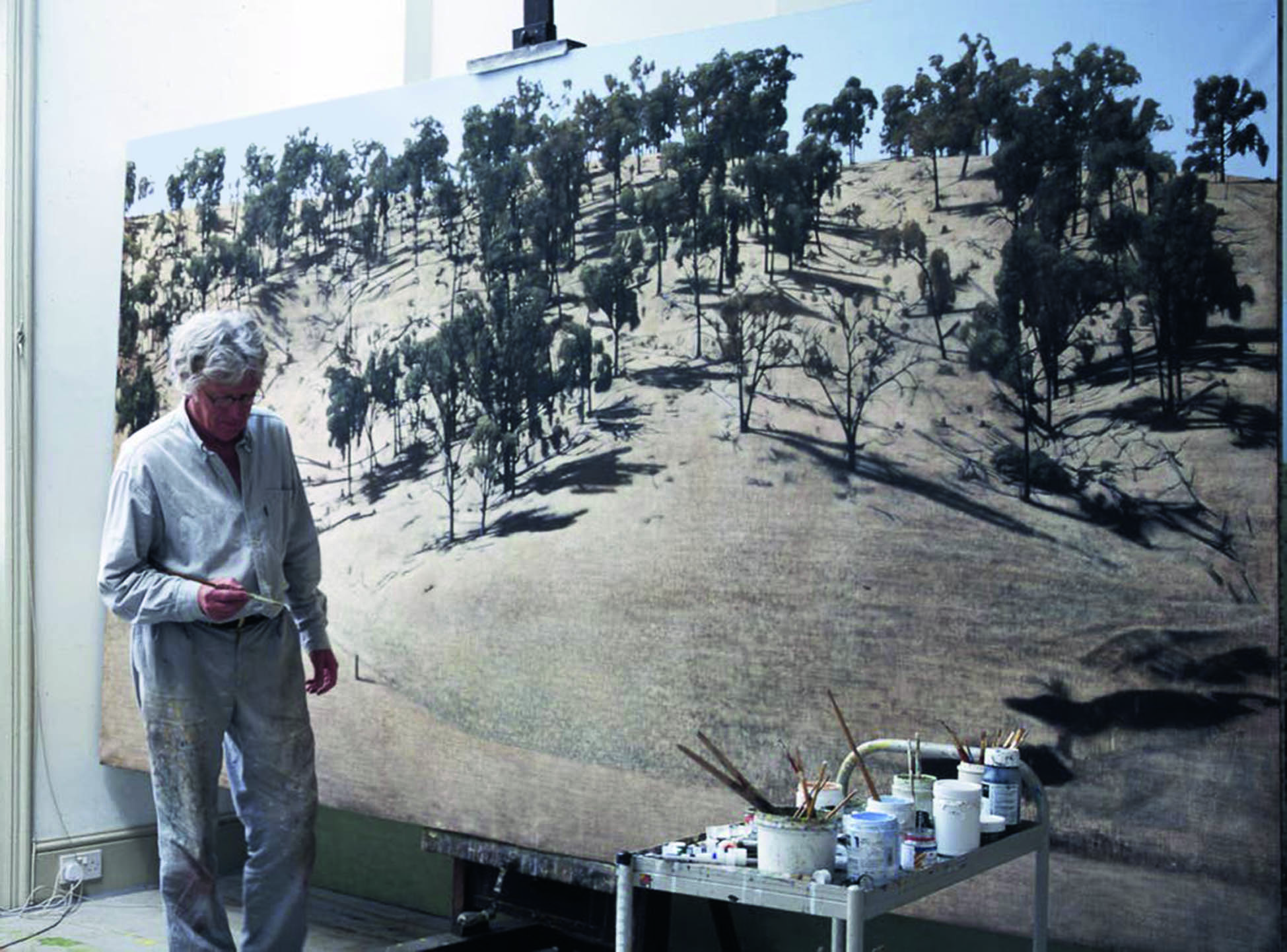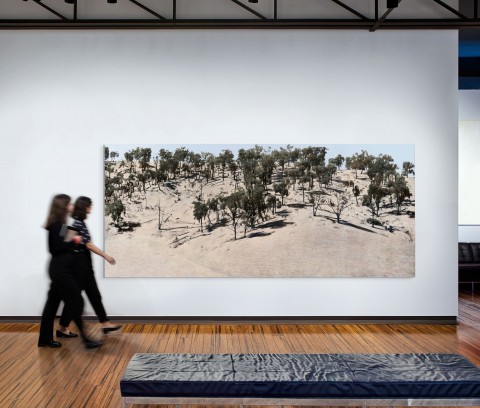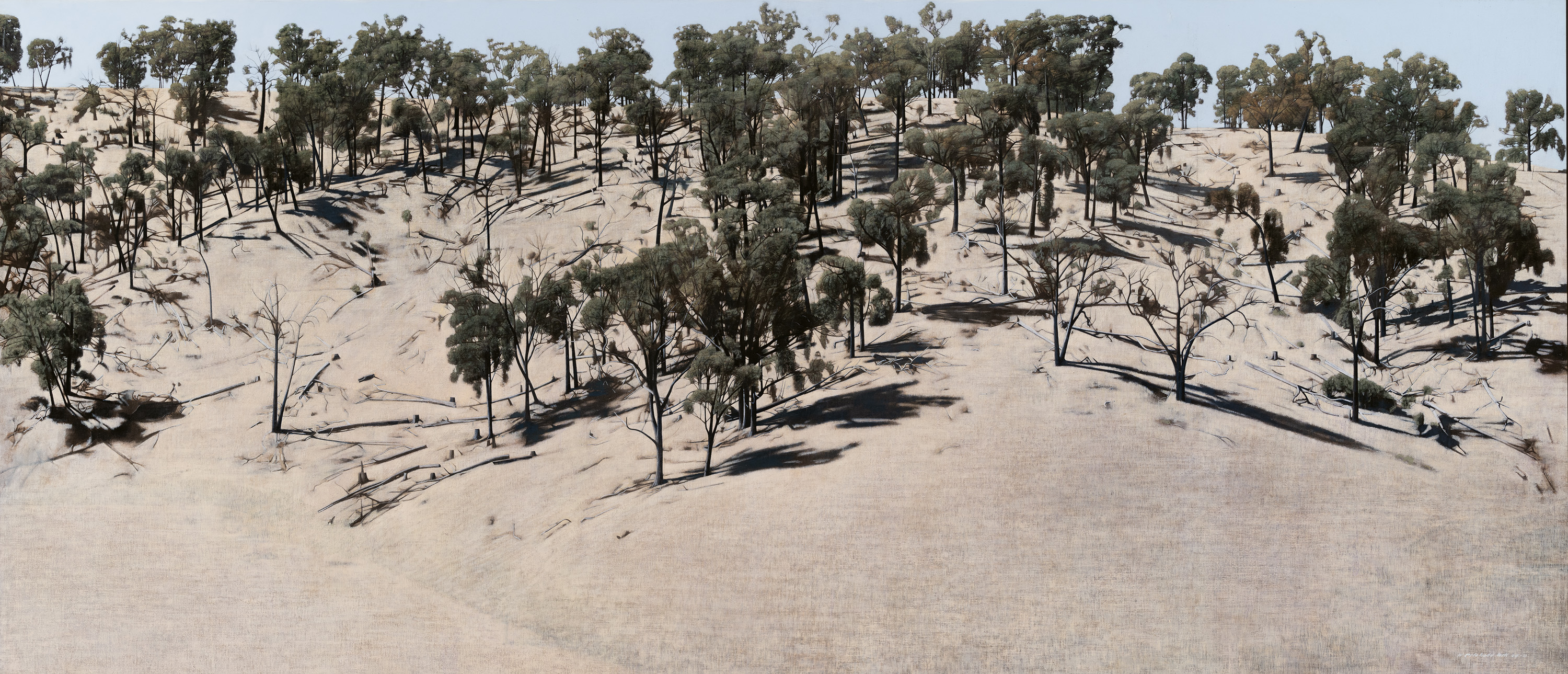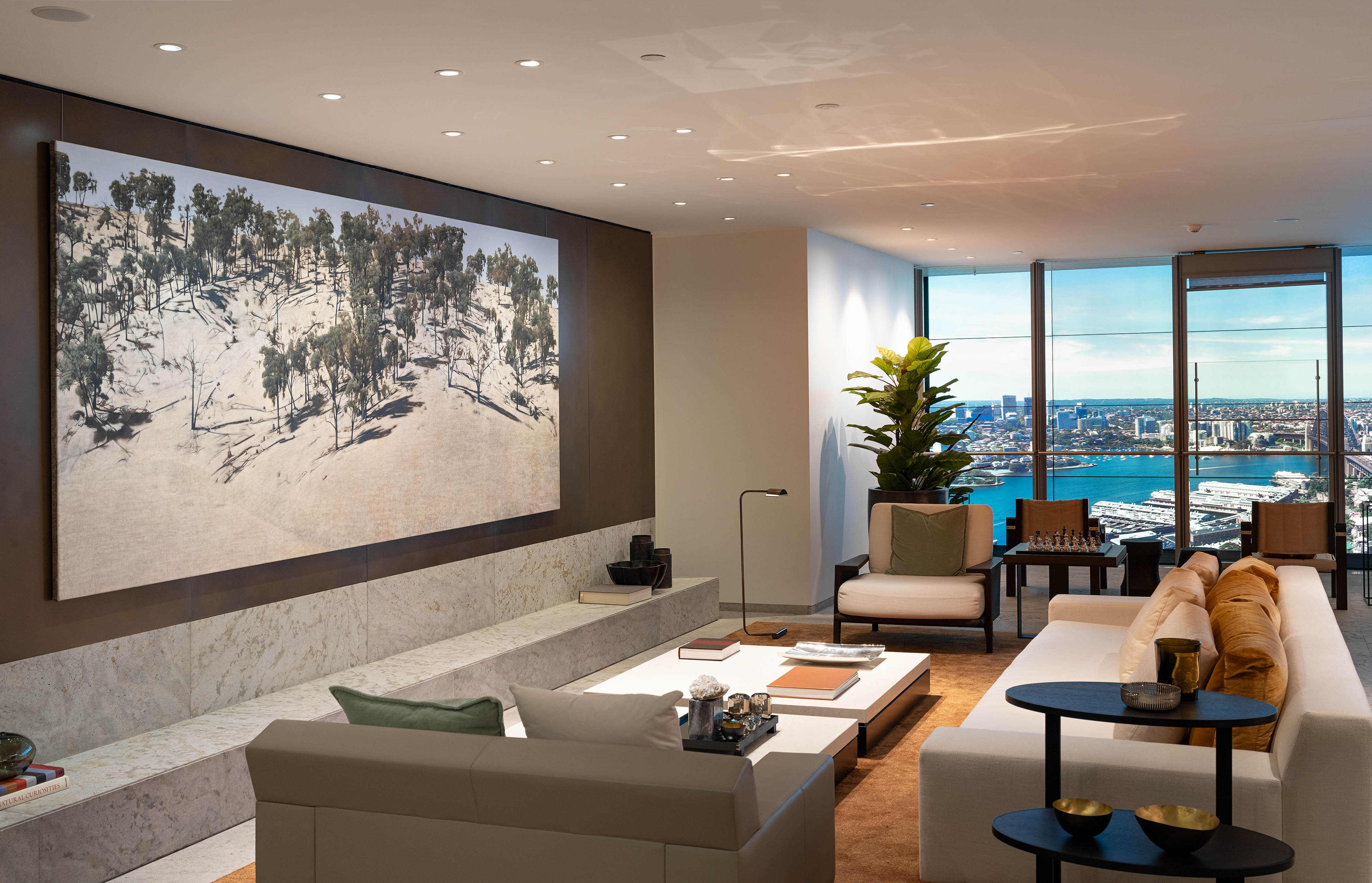HILLSIDE I, 2004 – 11
WILLIAM DELAFIELD COOK
synthetic polymer paint on linen
162.0 x 380.0 cm
signed and dated lower right: W Delafield Cook 04 – 11
Olsen Irwin Gallery, Sydney (labels attached verso)
Company collection, Sydney, acquired from the above in 2016
William Delafield Cook, A Survey, Gippsland Art Gallery, Sale, Victoria, 16 July – 11 September 2011, then touring to TarraWarra Museum of Art, Healesville, Victoria, 15 October 2011 – 12 February 2012, cat. 17
Summer Group Show, Olsen Irwin Gallery, Sydney, 29 January – 13 February 2014
Gregg, S., William Delafield Cook, A Survey, Gippsland Art Gallery, Sale, Victoria, 2011, cat. 17, pp. 46 (illus.), 49 – 50
Field, F., 'William Delafield Cook', obituary, Independent (UK), 13 May 2015
‘By giving what is commonplace an exalted meaning, what is ordinary a mysterious aspect, what is familiar the impressiveness of the unfamiliar, to the finite the appearance of infinity...’1
With their glacial proportions and immutable subject, Delafield Cook’s Australian landscapes such as the magnificent Hillside I, 2004 – 2011 eloquently encapsulate the concept of time immemorial. For despite their visual immediacy and apparent fidelity, such landscapes nevertheless appear suspended in time – suffused with a sense of calm and tranquillity that, though reassuring in its contemplation of an eternal space, simultaneously evokes a disquieting undercurrent of anxiety and uncertainty through the landscape’s ability to expose our limits and the finitude of our existence.2 The span of a human life pales into insignificance in the face of such an ancient, monumental landscape; and indeed, as the artist admits, part of his motivation for fastidiously recording a place springs from ‘acknowledging your mortality’ and ‘attempting to leave something behind after you are gone.’3
Heightening the depiction of reality to such unimaginable degree to reveal the ‘essence’ of his subjects, thus Delafield Cook highlights the surreal within the real, inviting us to contemplate that which lies beyond our perception – the basic human quest for an underlying universal truth that transcends time or locality.
Both Delafield Cook’s affinity for the Australian landscape and his consummate skill in capturing its essential character with an intensity unparalleled in Australian art is all the more remarkable when one considers that such paintings – which he created almost exclusively from the late 1970s onwards – were produced entirely from his studio in London. Relocating to London in 1958 after what had been intended as a short trip became a second home, significantly Delafield Cook would spend part of every year for the last three decades of his life travelling back to his country of origin to reconnect and undertake long journeys into the landscape ‘…where his ancestors had settled, where his grandfather had painted, where he had grown up…’4, before then returning to his studio abroad to recreate his vision. Paradoxically perhaps, such distance only enhanced the power of his iconic landscapes, allowing the artist to pursue ‘…the pure idea of land filtered through memory, in which all voices and activities are silenced, and the spirit of the earth can peacefully emerge.’5
210728 - William Delafield Cook in his studio cmyk copy 2.jpg

Noteworthy in its execution over an extended period of seven years, Hillside I clearly represented an epic undertaking for Delafield Cook and unsurprisingly perhaps, was selected for inclusion in his highly acclaimed survey exhibition organised by the Gippsland Art Gallery in 2011 (the artist’s last solo show before his untimely death in 2015). So utterly still and elemental that it almost seems beyond time, the composition offers an intriguing, mysterious interpretation of the parched hillside motif that has today become a universally recognised hallmark of his art. Reprising the artist’s earlier iterations of the theme which first emerged during the late 70s and early 80s – many of which have now entered the country’s major state gallery and corporate collections, including the Art Gallery of New South Wales; Bendigo Art Gallery; Heide Museum of Modern Art; The University of Melbourne Art Collection; ANZ Collection; and the Commonwealth Bank of Australia Collection – Hillside I also betrays unmistakable allusions to Tom Roberts’ celebrated bushranging masterpiece, Bailed Up!, 1895, 1927 (Art Gallery of New South Wales) with its high horizon line, tilted picture plane and sunburnt palette (though Delafield Cook deliberately eschews any hint of the sentimental human drama favoured by his predecessor).
Notwithstanding its ostensible neutrality or stark emptiness however, the landscape here is nevertheless informed by exquisitely rendered incidents ‘…if one is prepared to look long and hard enough’6 as Delafield Cook asserts, while the vast amplitude of the hillside is conveyed through the painting’s panoramic scale: ‘…it brings in this element of having to turn your head to take in the picture which fills the field of vision, like being there.’7 Simultaneously infinite in its detail and infinite in its expanse, the work thus fathoms an Australian ‘sublime’ that is boundless and majestic in the manner of Caspar David Friedrich and the eighteenth-century Romantics Delafield Cook so admired. Inspiring awe and reverence, the classical harmony and stillness imply that the forces of the cosmos have here aligned – that there is a divine order amidst the chaos of nature.8 Bereft of any apparent narrative, it is the landscape itself, distilled in its unknowable ‘essence’, that occupies the focus, imbued with a sense of drama that leaves the viewer poised indefinitely in a moment of suspense. As Delafield Cook observes of this quality in his art, ‘It’s the stage that we’re living out our lives in… The picture is the set, pregnant with possibilities.’9
1. Quote from Novalis, Poeticism (1798) inscribed in one of Cook’s notebooks; see Hart, D., William Delafield Cook, Craftsman House, Sydney, 1998, p. 220
2. Fitzpatrick, A., ‘Intimations of Mortality in the Work of William Delafield Cook’ in William Delafield Cook. A Survey, Gippsland Art Gallery, Sale, 2011, pp. 32 – 44
3. Delafield Cook, cited in Hart, op. cit., p. 184
4. ibid., p. 168
5. Gregg, S., ‘William Delafield Cook: A Survey’, in William Delafield Cook. A Survey, op. cit., pp. 2 – 23
6. Delafield Cook, cited in Hart, op. cit., p. 197
7. Delafield Cook, cited ibid., p. 199
8. Gregg, op. cit., p. 9
9. Delafield Cook, cited ibid., p. 16
VERONICA ANGELATOS



